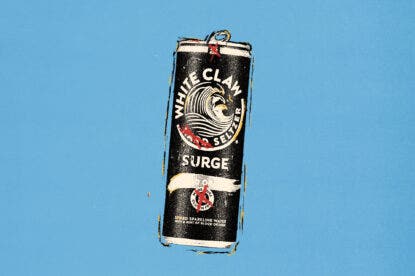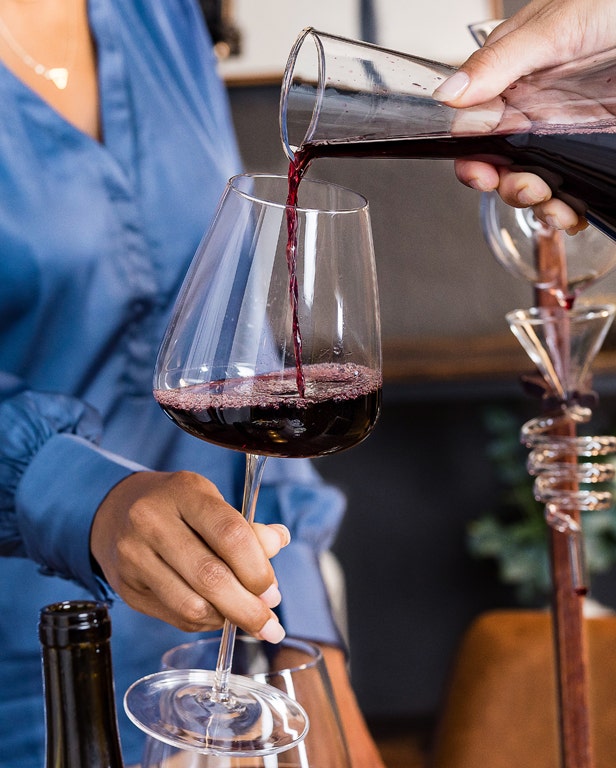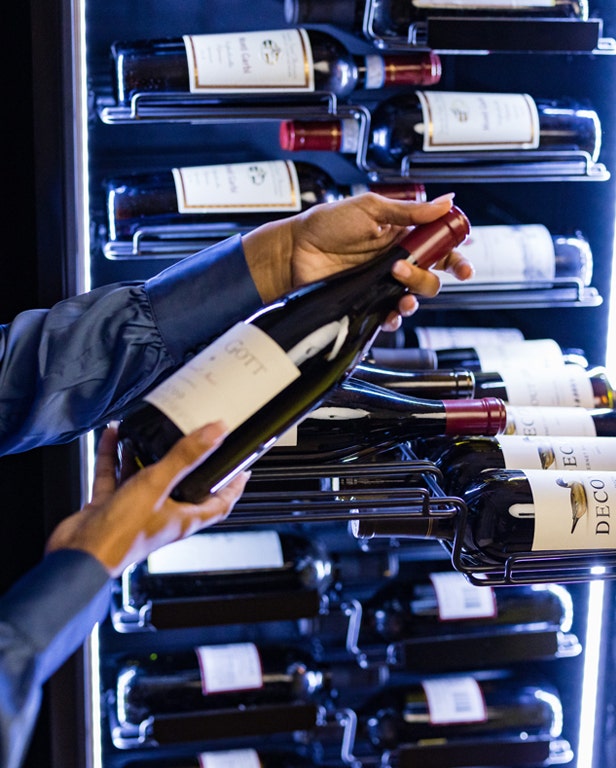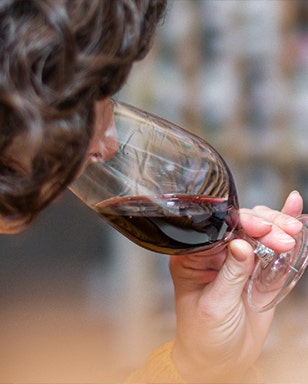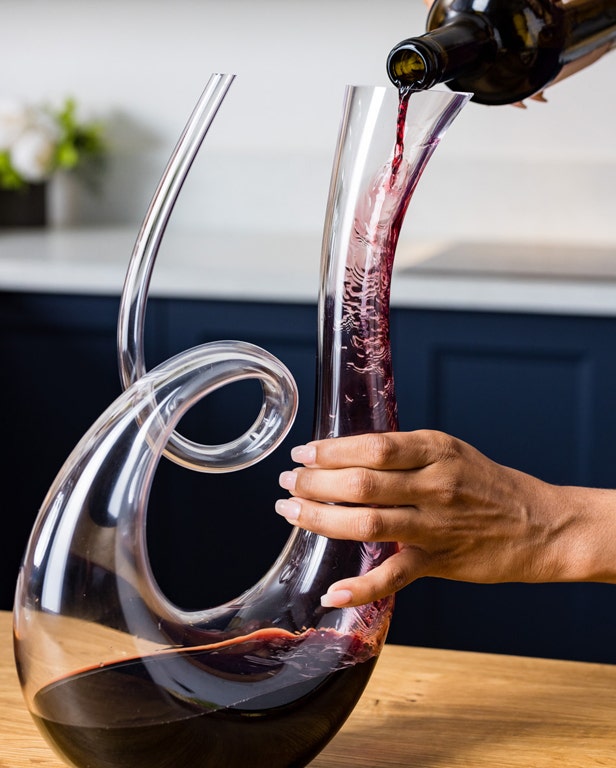Effervescent, refreshing and with a lower ABV than, say, a martini or even a daiquiri, the spritz has long been the drink of choice for many brunch-goers and summer vacationers. In recent months, however, the wine- and apertif-based cocktail has been on the rise as an all-hours, all-seasons drink.
Spritz sales have skyrocketed threefold in restaurants and bars, according to a recent study by hospitality research firm CGA. The On Premise User Survey compared check averages from 15,000 bars and restaurants across the United States between the falls of 2022 and 2023. The spritz jumped eight spots to become the seventh-most popular cocktail of choice, beating out heavy hitters like the espresso martini and the bellini.
The massive boost in spritz consumption is likely due to a rise in the demand for lower-alcohol drinks, which has been linked to the so-called sober curious movement. “We’re seeing more adoption and accessibility of the low-alcohol and non-alcohol market,” says Ben Tilton, associate client solutions manager at CGA. “It’s definitely a trend. People still want to go out, but they want to have different options for different occasions.”
You May Also Like: How the Hugo Spritz Became 2023’s Drink of Summer
Younger adults seem to be driving this uptick. Demographic data from the survey found that cocktail consumption is highest among 21- to 34-year-olds, 37% of whom now order mixed drinks—up from 31% last year. This age range is widely known to drink less than previous generations. An often-cited report by Berenberg Research found that Gen Zers consumed 20% less alcohol per individual than millennials (who are also drinking less than their predecessors).
Anecdotally, this plays out in the drinking experiences of people like Molly Michowalski, a 27-year-old Sephora buyer who lives in San Francisco. The skincare executive favors spritzes over boozier libations when she goes out with friends. “It’s drinking less alcohol, but actually enjoying the flavors of the drink,” she says.
Michowalski is a big fan of both the Aperol spritz and the recently TikTok-famous Hugo spritz. “[They’re] so light and easy to drink,” she says. “I feel like a spritz is a good balance. You can sit in the sun or enjoy a nice happy hour without getting shammered,” a portmanteau she and her friends use for “shit-faced hammered”.
But it’s not just younger generations making the move toward lower-alcohol drinks. Nicole Votano, a 42-year-old culinary executive for Remy Robotics, spent her entire adult life working in restaurants—and drinking whiskey. She, like many, has found the Old Fashioneds and other boozy libations she once preferred now feel too heavy. “I can’t drink them anymore,” she says. “I don’t want to feel wasted.”
These days, Voltano prefers mellower cocktails. On a work trip to Spain, she discovered the Hugo spritz, which has since become her favorite drink. While the lower ABV is certainly a major factor (“I’m past enjoying having a hangover,” she says), the floral notes of the cocktail’s requisite St. Germain and the effervescent bubbles appeal to her culinary sensibilities. “I can’t believe I found my favorite drink at the age of 41,” she adds.
You May Also Like: Non-Alcoholic Apertif Spritz
These factors—evolving drinking habits, the lower alcohol content and appealing flavor combinations—are why many industry professionals believe this newfound love for spritzes is more than just a fad. Allegra Angelo, partner and beverage director at Vinya Wine, a wine shop and bar with two Miami-area locations, has seen spritz sales increase in the last four years, especially with customers under the age of 30.
“Every time we put spritzes on the menu, they always do well,” she says. “People want to drink something that’s easier and lighter. It makes them feel better.”
Due to the spritz’s popularity and its endless iterations, Angelo has started hosting “Beyond the Aperol Spritz” classes at Vinya, which she says have been wildly popular and regularly sell out. The sessions, which explore spritzes made with different liqueurs, juices, spirits, bitters wines and herbs, cover variations like a Lillet Rose and tequila spritz boosted with basil, sparkling wine and soda water. Angelo also likes to lighten classic cocktails by turning them into spritzes. For instance, the wine professional turns a mojito into a “nojito” by cutting the amount of rum in half and adding more bubbles. It’s a formula that can work with most cocktails, she says: “Use half the amount of alcohol and add dry sparkling wine or soda water or a combination of both.”
You May Also Like: The New Trend in Hard Seltzer? Regular Seltzer
Her one rule? “There should be some type of alcohol and something bubbly, whether it’s a sparkling wine or sparkling water,” she says.
Though sparkling winemakers are certainly benefitting from the current spritz craze, they are aren’t the only ones. Yvette Mathis, senior national account manager for Nestle Premium Waters, which includes sparkling waters Sanpellegrino and Perrier, has seen an uptick in interest among consumers. The company partnered with Campari last year for an Italian melon spritz that featured Sanpellegrino Limonata. “At the end of the day, the spritz is the number one cocktail in Italy, so we leaned into the spritz because of our Italian heritage as a company,” she says.
“Millennials are drinking less, but they’re still willing to pay for a cocktail as long as it tastes good and it’s pretty,” Mathis says. “A spritz is just a beautiful drink.”
Published: January 25, 2024





